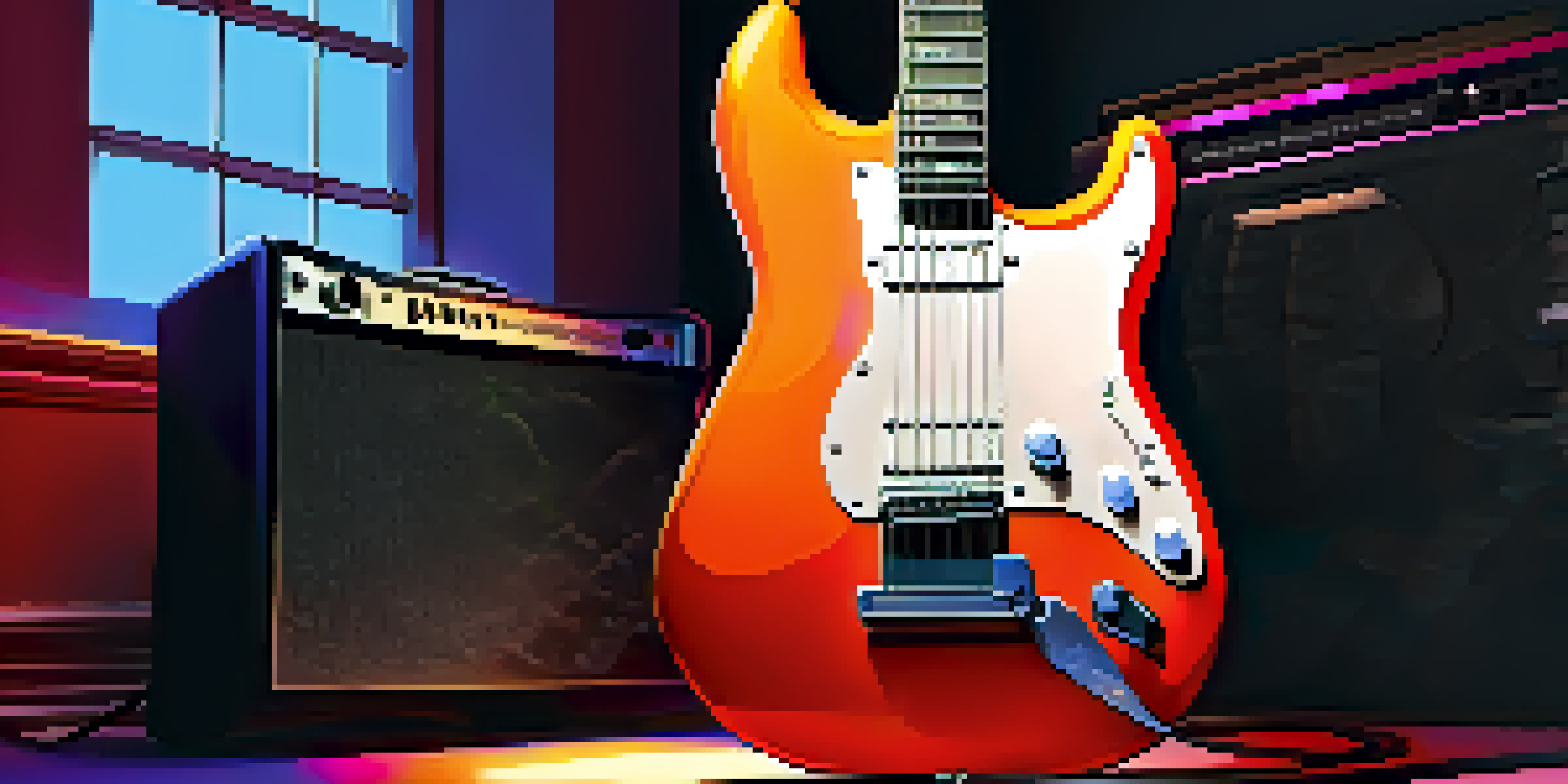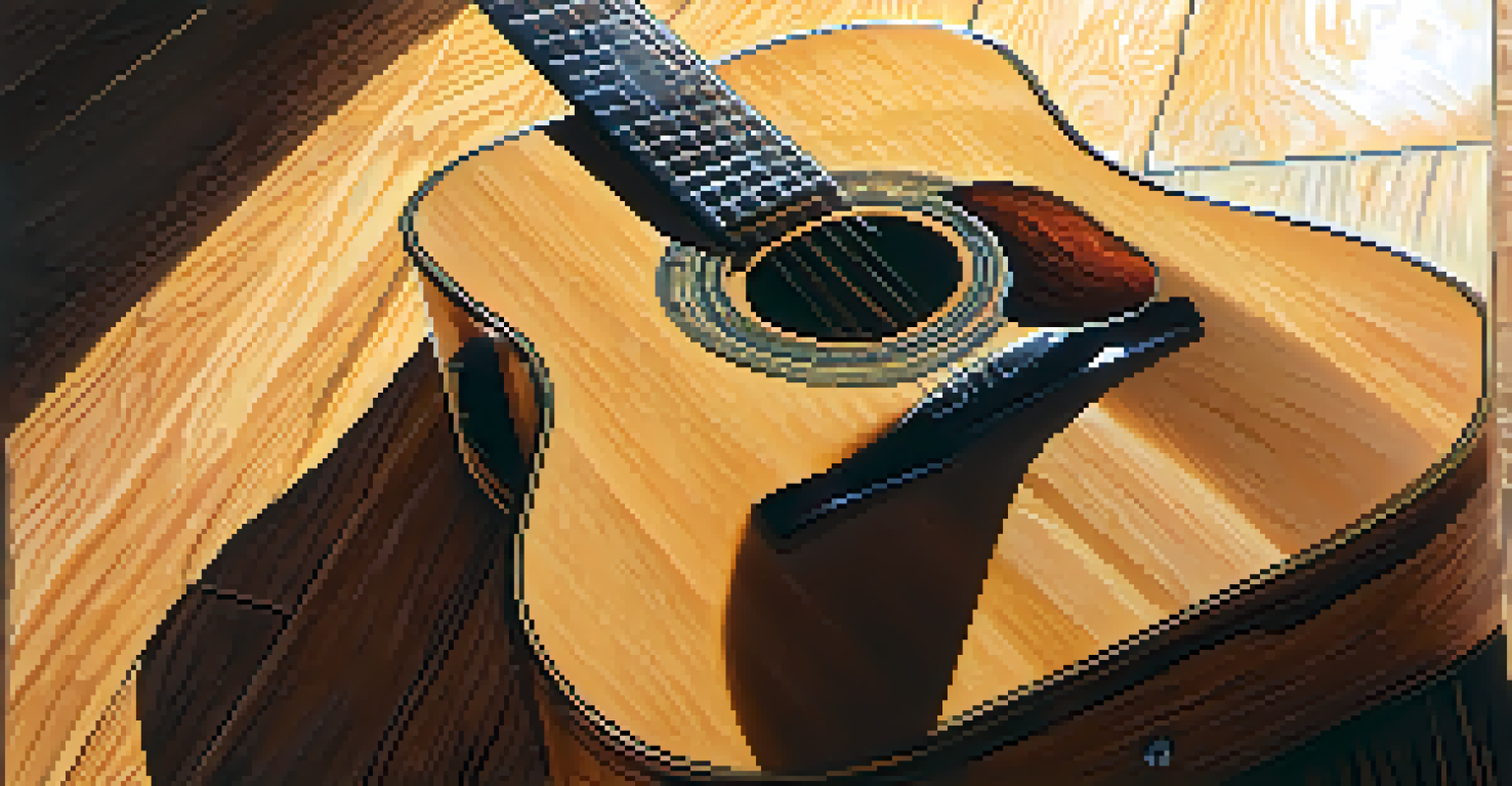Exploring Drop D Tuning: A Guide for Rock and Metal Musicians

What is Drop D Tuning and Why Use It?
Drop D tuning is a popular alternative guitar tuning where the lowest string (6th string) is tuned down a whole step to D. This simple change allows for deeper, heavier sounds that are particularly favored in rock and metal genres. Musicians often turn to Drop D to achieve a more powerful resonance and to make playing power chords easier.
The guitar is a miniature orchestra in itself.
In Drop D tuning, the standard EADGBE tuning shifts to DADGBE, which gives guitarists immediate access to a range of new chord voicings and riff possibilities. This tuning not only makes it simpler to play certain riffs but also opens up a lot of creative avenues for songwriting. Many iconic songs across rock and metal history have utilized this tuning to great effect.
In essence, Drop D tuning can transform your playing style, making it a staple for anyone looking to explore heavier sounds. If you’re tired of the same old standard tuning, Drop D might just be the refreshing change you need to inspire your next songwriting session.
How to Tune Your Guitar to Drop D
Tuning your guitar to Drop D is a straightforward process, and it only takes a minute or two. Start by tuning your 6th string down from E to D, which can be done by ear, using a clip-on tuner, or a tuning app. Once the 6th string is in tune, double-check the rest of the strings, as they will remain the same as standard tuning.

A quick tip: when tuning down to Drop D, it’s often helpful to play a D note on the 5th string (5th fret) to ensure your low E string matches the pitch. Once you’ve got that low D sounding right, strum a few chords to feel how the tuning affects your sound. You might be surprised by the richness and depth it adds to your playing!
Understanding Drop D Tuning Benefits
Drop D tuning enhances guitar resonance and simplifies power chords, making it a favorite for rock and metal musicians.
Remember, the key to mastering any tuning is practice. Spend some time getting used to the new tonal character of your guitar, and explore different chord shapes and scales that this tuning offers. You’ll quickly find that Drop D tuning can become an integral part of your musical toolkit.
Famous Songs That Use Drop D Tuning
Many iconic rock and metal songs have embraced Drop D tuning, showcasing its versatility and power. For instance, 'Smells Like Teen Spirit' by Nirvana uses this tuning to create a raw, grunge sound that defined a generation. Similarly, songs like 'Creep' by Radiohead and 'Black Hole Sun' by Soundgarden also leverage Drop D to achieve their haunting melodies.
Music is the shorthand of emotion.
In the metal realm, tracks like 'Kashmir' by Led Zeppelin and 'The Day That Never Comes' by Metallica demonstrate how Drop D can contribute to complex, heavy riffs and a powerful rhythm section. These examples highlight how artists have used this tuning to craft memorable music that resonates with audiences worldwide.
By learning these songs, you can see firsthand how Drop D tuning can enhance your songwriting and performance. Whether you’re covering these classics or creating your original pieces, tapping into this tuning can elevate your music to new heights.
Techniques for Playing in Drop D Tuning
Once you're comfortable with Drop D tuning, it’s time to explore different playing techniques that work well with it. Power chords are a popular choice, as they are much easier to play in this tuning—simply use the 6th string as your root note and strum. This makes it perfect for driving rhythms often found in rock and metal music.
Another powerful technique to master is palm muting, which can add a percussive element to your playing. By lightly resting your palm on the strings near the bridge while strumming, you can create a chugging sound that is a hallmark of many heavy riffs. Experiment with dynamics and varying your strumming intensity to discover unique sounds.
Techniques for Drop D Playing
Mastering techniques like power chords and palm muting can elevate your sound and creativity in Drop D tuning.
Don’t forget about fingerpicking! Drop D tuning opens up new possibilities for fingerstyle playing, allowing for intricate melodies and harmonies. By incorporating different techniques, you can make your music more dynamic and engaging, keeping your listeners hooked.
Exploring Chord Progressions in Drop D
With Drop D tuning, you can experiment with a variety of chord progressions that highlight its unique sound. Start with simple progressions like D5, A5, and G5, which all use the open strings to create a full, resonant tone. This simplicity allows for a focus on rhythm and groove, fundamental elements in rock and metal music.
As you grow more comfortable, try out more complex progressions and substitute standard chords with their Drop D counterparts. For example, instead of a standard A major chord, use the A5 power chord for a heavier feel. This not only adds depth to your music but also invites exciting new songwriting possibilities.
Take inspiration from artists you admire and analyze their progressions in Drop D tuning. You might discover fresh ideas that spark your creativity, leading to unique compositions that stand out in your songwriting repertoire.
Tips for Songwriting with Drop D Tuning
When it comes to songwriting in Drop D tuning, the key is to embrace the freedom it provides. Start by experimenting with riffs that utilize the open strings, allowing you to create a rich harmonic foundation. Don’t hesitate to let your creativity flow—sometimes the best ideas come from simply playing around with different sounds.
Consider writing lyrics that complement the heavier sound of Drop D. Themes of rebellion, introspection, or empowerment often resonate well with the powerful tonal character this tuning offers. Pairing your musical ideas with fitting lyrics can enhance the overall impact of your song.
Common Mistakes to Avoid
Avoid sticking to familiar shapes and neglecting intonation to fully explore the unique sounds of Drop D tuning.
Finally, collaborate with other musicians in Drop D tuning. Sharing ideas and experimenting together can lead to unexpected breakthroughs and new perspectives on your music. Whether you're jamming with friends or working on a recording, collaboration can breathe life into your songwriting process.
Common Mistakes to Avoid in Drop D Tuning
One common mistake musicians make when transitioning to Drop D tuning is neglecting to adjust their playing technique. Since the low E string is now a D, it’s important to recalibrate how you approach chords and riffs. Focus on adapting your finger positioning to make the most of the new tuning.
Another pitfall is not fully exploring the potential of Drop D. Many guitarists stick to familiar chord shapes and riffs, missing out on the unique sounds this tuning can produce. Be adventurous and experiment with different voicings and techniques to fully realize the benefits of Drop D.

Lastly, be mindful of your guitar's intonation. Since you’ve altered one string's pitch, it’s crucial to keep your guitar properly set up to ensure that it sounds great across the fretboard. Regular maintenance will help you avoid tuning issues and keep your playing sounding its best.